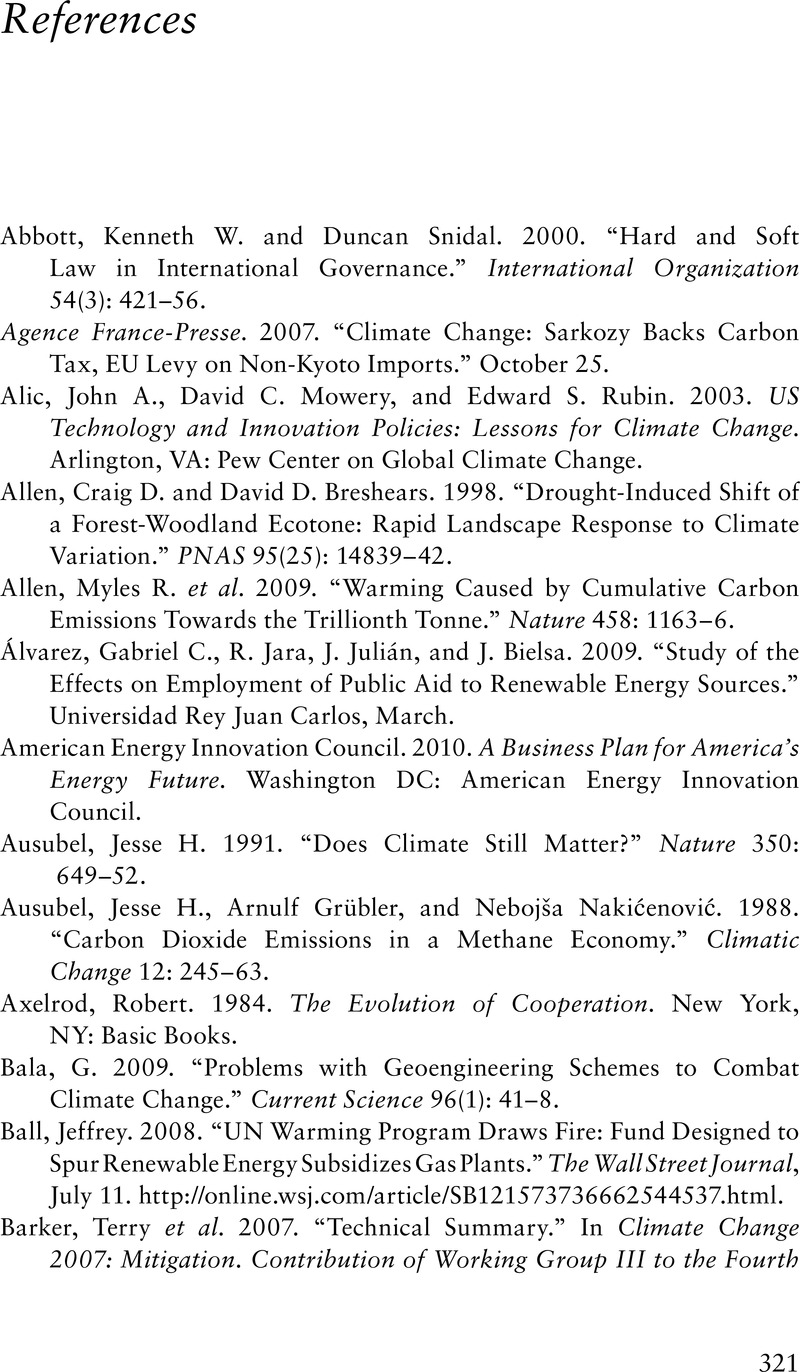Book contents
- Frontmatter
- Contents
- List of figures
- List of tables
- Preface and acknowledgements: a journey studying international environmental regulation
- Hard truths about global warming: a roadmap to reading this book
- Part I Setting the scene
- Part II The three dimensions of climate policy strategy
- Part III Putting it all together
- Notes
- References
- Index
- References
References
Published online by Cambridge University Press: 05 June 2012
- Frontmatter
- Contents
- List of figures
- List of tables
- Preface and acknowledgements: a journey studying international environmental regulation
- Hard truths about global warming: a roadmap to reading this book
- Part I Setting the scene
- Part II The three dimensions of climate policy strategy
- Part III Putting it all together
- Notes
- References
- Index
- References
Summary

- Type
- Chapter
- Information
- Global Warming GridlockCreating More Effective Strategies for Protecting the Planet, pp. 321 - 350Publisher: Cambridge University PressPrint publication year: 2011



